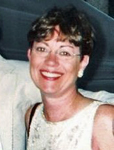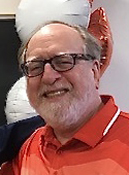 The journey to Emerald Life Master began 50 years ago. I love both the social aspect of bridge as well as the intellectual stimulation and challenges. I enjoy sharing my thoughts via the ABC of Bridge articles that I write for our district. I am grateful to my favorite partner, my wife Janis. Most of all I believe the most fun is derived from constantly seeking ways to improve my bidding, defense, and declarer play.
The journey to Emerald Life Master began 50 years ago. I love both the social aspect of bridge as well as the intellectual stimulation and challenges. I enjoy sharing my thoughts via the ABC of Bridge articles that I write for our district. I am grateful to my favorite partner, my wife Janis. Most of all I believe the most fun is derived from constantly seeking ways to improve my bidding, defense, and declarer play.
Tag Archives: story
Buddy Hano – Emerald Life Master
 After 38 years of playing bridge, I finally achieved Emerald life master. I want to thank all of the many partners I played with over the years, especially Norma Bernstein , who I’ve been playing with for over 20 years. Most of all I want to thank my wife, Joann, who I met playing bridge and we’ve been married 37 years. Without Joann I wouldn’t have achieved this goal.
After 38 years of playing bridge, I finally achieved Emerald life master. I want to thank all of the many partners I played with over the years, especially Norma Bernstein , who I’ve been playing with for over 20 years. Most of all I want to thank my wife, Joann, who I met playing bridge and we’ve been married 37 years. Without Joann I wouldn’t have achieved this goal.
Rick Olanoff – Sapphire Life Master
I learned to play bridge in the dorm lounge at Harpur College (Now SUNY Binghamton). That is how I got to know my first wife, Claudia, the mother of my two bio daughters. She was my partner in some early District 112 sectionals. I remember one time playing our opening match against a team headed by Don Dalpe, knowing we’d have to be fortunate to win. So I psyched Flannery (legal back then), we won the match, lost the next three and won the consolation.
I won my first master points at a club near Binghamton playing with my roommate Marc Saperstein. We played a homemade system borrowed from a friend’s brother that required us to open every hand e.g. 1C=0-6 HCPs. The director thought about this and let us play it. We finished 5th of 18 pairs….Interestingly Marc started playing in clubs and sectionals a few years ago, with a renewed passion and we’ve played a few times on BBO.
I made Life Master back in 1977 in the Toronto Nationals playing with Peter Katz, a favorite friend and partner, who also went to Harpur, but we didn’t meet until we each had moved to the Syracuse area.
I remember the joy of winning the first ever District Flight B GNT’s. Our team was Larry Merritt and I along with Anne Scharmach and Jan Scanlon. We won the final very easily, but alas there was no national Flight B GNT until the next year.
The GNT’s became my favorite event, and fortunately we won Flight B a few more times and Flight A several times. In 2010 playing with Doug Dye, Howie Cohen, Corey Krantz, Andy Kauffman and Elliot Shalita, we won it all after qualifying last. They were excellent teammates and none of our matches were nail-biters. And you, Joann, were there to congratulate us. I never expected to win. My teammates did, while I told Doug that my goal was to become closer to him and our other team members.
I won my first Regional titles playing on a Men’s team with Peter Katz, Bernie Gorkin, Dan Boye, and a Canadian pair who drank beer throughout the event. Fred and I later won a pairs event in a Niagara Falls Regional. (no beer drinking, though).
I later developed a partnership with Don Dalpe and we won several Flight A GNT’s but never contended at the national GNT’s. We did have high finishes in the 3- day National 0-5,000 limited pair events, including a third, as well as a third in the North American Pairs, Flight B. Another time we won the District 4 NAP’s in the top flight and after trudging through 10 inches of snow in Detroit to find our hotel we finished 23rd overall.
However, when Don moved his bridge affiliation to his other home in Florida, Fred died, Larry and Peter had moved away long ago and bridge club games dwindled in Syracuse, so did my enthusiasm for playing in clubs, Sectionals, Regionals and Nationals.
I exclusively played bridge on-line with Don mainly. More recently I’ve also played with an old partner Bill Burnet and even more recently with Doug Dye. I thought it would take me years at about 50 mp’s a year to reach Sapphire Life Master. But along came the on-going endlessly tragic COVID-19 era and on-line bridge appealed to me more often.
Bridge is a great game; I’ll play it as long as I can. I do miss in-person bridge, larger club games, tough fields in sectionals, the GNT’s and many of my old friends and partners, but I’m very happy that one of the ways people relaxed at Harpur College was to play bridge in the dorm lounges.
James Post – Bronze Life Master
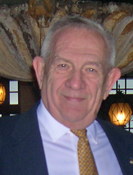 Bridge is such a great game, I have made many friends and the bridge community in northeast Pennsylvania has been so much help in my making life master. All of the directors, Beth Rosenthal, Joe Destini, George Mansour and the late George Marcy were all willing to help and teach the game.
Bridge is such a great game, I have made many friends and the bridge community in northeast Pennsylvania has been so much help in my making life master. All of the directors, Beth Rosenthal, Joe Destini, George Mansour and the late George Marcy were all willing to help and teach the game.
I would also like to thank my many partners for helping, especially Harold, Joe, and Don they always were there to play and try to help get those points. A big thank you to all of the players that offered congratulations even though we have all been trapped by the virus. Hope to see all of you soon
Jackie Umphlet – Gold Life Master
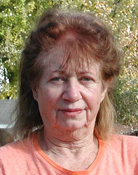 Let’s see. 1990. Excellent year for California wines. Also the year I was introduced to the game of duplicate bridge. Kitchen bridge (actually we played in the living room) had become a driving force. We all tried to grab the contract. Didn’t matter if we made it, went down or underbid. We were in charge. Then my sister takes me to my first duplicate game. Started to tell her about this fantastic meal I had made that night. Shush. So anyway I guess it’s all going to be about bridge. 2 – 3 hands into the game, Jay Burke, sitting north bids 1 spade. My partner, Peggy, passes – Jay’s partner Dennis O’Brien passed. I passed. Jay Burke went down 3 as I recall. 150 points. We were feeling good – thinking we had gotten a good board – maybe even a top. Next board, 1 spade was opened by Jay Burke with 2 spades in his hand while my sister and I had a definite 4 spade contract. We had the spades and the points to make game. (620 points). Jay Burke had psyched. My introduction to the bridge psyche.
Let’s see. 1990. Excellent year for California wines. Also the year I was introduced to the game of duplicate bridge. Kitchen bridge (actually we played in the living room) had become a driving force. We all tried to grab the contract. Didn’t matter if we made it, went down or underbid. We were in charge. Then my sister takes me to my first duplicate game. Started to tell her about this fantastic meal I had made that night. Shush. So anyway I guess it’s all going to be about bridge. 2 – 3 hands into the game, Jay Burke, sitting north bids 1 spade. My partner, Peggy, passes – Jay’s partner Dennis O’Brien passed. I passed. Jay Burke went down 3 as I recall. 150 points. We were feeling good – thinking we had gotten a good board – maybe even a top. Next board, 1 spade was opened by Jay Burke with 2 spades in his hand while my sister and I had a definite 4 spade contract. We had the spades and the points to make game. (620 points). Jay Burke had psyched. My introduction to the bridge psyche.
While taking a beginner bridge lesson at the Moose, Bob Poulsen called to see if someone would be willing to fill in to complete a full table. Why not? Seated across from an elderly gentlemen. No convention card, no discussion about what we play. My many conventions – Stayman – transfers – Gerber. I was feeling pretty confident. We played. We came in first. 13 tables. Leon Gough, Billy Gough’s father, was my partner. And need I remind anyone about Billy Gough’s skill and winning ways at the bridge table. Leon Gough’s parting words to me were – “You are the worst player I have ever played with.”
1990, Adrianna Pirvulescu (Romanian – a math professor at the University in Bucharest and whom I had partnered with maybe 4 or 5 times) suggested we go to the regional in Lancaster. Her words to me: “Jackie, let me do everything – you do nothing”. And that was it. Big game. I don’t know exactly how many C tables, but there were a heck of a lot. The Host Hotel’s seating was filled and the overflow was pretty nearly filled to capacity in the tennis court.
Game ends. Announcement over the loud speaker – Adrianna Pirvulescu and Jackie Umphlet first in section C- 12 gold. Oh yeah, sure. But there it was. Made the cover of the daily bulletin. There is something to say about accents. The day we got our 12 gold, we were playing against two men who asked what the final contract was – Adriana’s and mine. She proceeded to say hearts which in her accent was heard as clubs by our opponents. We made the unmakeable contract. And against all odds, the following year at Lancaster, we were seated opposite these two gentlemen again. I said, do you remember us? Need I tell you his comment.
One of my fun times was when this gentlemen on my left picked up a paper cup with vast amounts of lipstick on it and drank from it – apparently not seeing the lipstick until after drinking. He said to me “This is your cup, isn’t it?” I said “no”, but don’t worry you’ll be okay, just go and eat a banana. “ Bananas were big that year.
Present day. I’m married to Larry, brilliant in my book, who tries, really tries and keeps trying to better my bridge. What are the ODDS?
Frank Morgan – Ruby Life Master
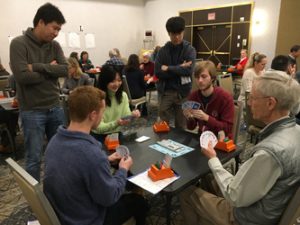 In January I taught an ACBL College Initiative course on Tournament Bridge at Williams College, where I am a Professor Emeritus in Mathematics, featured in the April 2020 Bridge Bulletin. Although I had never favored online bridge, since the pandemic I’ve discovered the joys of playing with favorite partners from around the world and racked up the masterpoints for my new Ruby Life Master status.
In January I taught an ACBL College Initiative course on Tournament Bridge at Williams College, where I am a Professor Emeritus in Mathematics, featured in the April 2020 Bridge Bulletin. Although I had never favored online bridge, since the pandemic I’ve discovered the joys of playing with favorite partners from around the world and racked up the masterpoints for my new Ruby Life Master status.
The Tournament Bridge class at a regional: Geoffrey Lu, Alex Simons, Miranda Wang, Jihoon Kim, Max Everett, Professor Frank Morgan.
